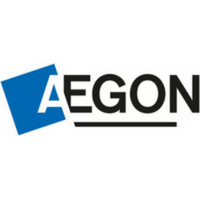How furlough has affected employee pension contributions – and four ways you can help
Furlough was a saviour for many employees and companies during the Covid-19 pandemic – it kept businesses afloat and people in employment during the hardships of lockdown. However, there was an impact on pensions during that period, which may have a long-term effect on employees.

The furlough scheme revisited – and how it may have affected pension contributions
The government's Coronavirus Job Retention Scheme (CJRS) used by employers for employees ended on September 30, 2021. It provided varying levels of support, depending on the severity of the lockdown restrictions in place, since its introduction in March 2020.
At its most generous – between 1 March 2020 and 31 July 2020 – employers could claim 80% of normal wages from the CJRS up to a cap of £2,500 per month, along with the associated employer National Insurance contributions (NICs) and minimum automatic enrolment contributions (3% of qualifying earnings). From 1 August 2020, it wasn’t possible for an employer to claim pension contributions from the CJRS, meaning they had to cover the cost of ongoing employer contributions themselves.
Although there was a limit on how much could be claimed in earnings from the CJRS, employers could top up an employees’ wages above the maximum permitted claim level for any hours not worked.
Of course, not all employers would have been in a financial position to do that. As a result, it’s understandable that some employees were receiving furlough pay lower than their normal wages for any hours not worked. This is likely to have resulted in a reduction in the monetary value of pension contributions going into their workplace pension.
Talk through options to make up shortfalls in pension contributions
Even though being on furlough could have created a period with lower contributions going into workplace pensions, there’s always the opportunity to make up ground by increasing contributions when affordable.
1. Consider having a conversation about contributions with employees
Clearly setting out employee options to increase regular contributions or make one-off single contributions can help them feel both supported and more in control during what have been unsettling times. Let them know if you offer any salary sacrifice options too. You should make them aware that the value of investments can fall as well as rise and isn’t guaranteed – and that the final value of a pension pot could be less than they’ve paid in when they come to take any benefits.
If you’re a business that's fared well during the pandemic, you may even consider boosting your employer contributions to reward colleagues for their hard work and loyalty during a difficult time.
If you have a workplace scheme adviser, they should be able to support you with this – or you can direct employees to speak to a financial adviser before making any decisions.
2. Encourage employees to become knowledgeable on tax relief
The most that can be paid into pension savings in a tax year to benefit from tax relief is £40,000. This is known as the annual allowance and includes all contributions paid by an employee, their employer and any third party on the employee’s behalf.
Many employees who have been on furlough and have seen a cut in monetary terms in their pension contributions might be able to take advantage of these limits to boost their pension savings to help make up for any shortfalls.
This is based on our understanding of current tax law and HRMC practice, which may change. Any tax relief will depend on individual circumstances.
3. Carry forward rules
It can also be possible to make use of ‘carry forward’ rules to take advantage of unused contributions from previous tax years. This could be done at any time an employer or employee has spare cash available to make additional pension contributions. But to carry forward, the maximum annual allowance has to be used up first in the current tax year.
4. Refer employees to more information
We’ve lots of articles on our customer perspectives hub that you can share with your employees. For example, our article how to contribute more towards your pension is a great place for your employees to learn how they can make up for any shortfalls in pension contributions.
While furlough might have had an impact on pension contributions for both employers and employees, clear planning and advice can help remedy any short-term damage. For the best results, take action sooner rather than later.
This article was supplied by Aegon.
Supplied by REBA Associate Member, Aegon
We're one of the UK's top 3 providers of workplace pensions solutions supporting over 10,000 employer schemes.







